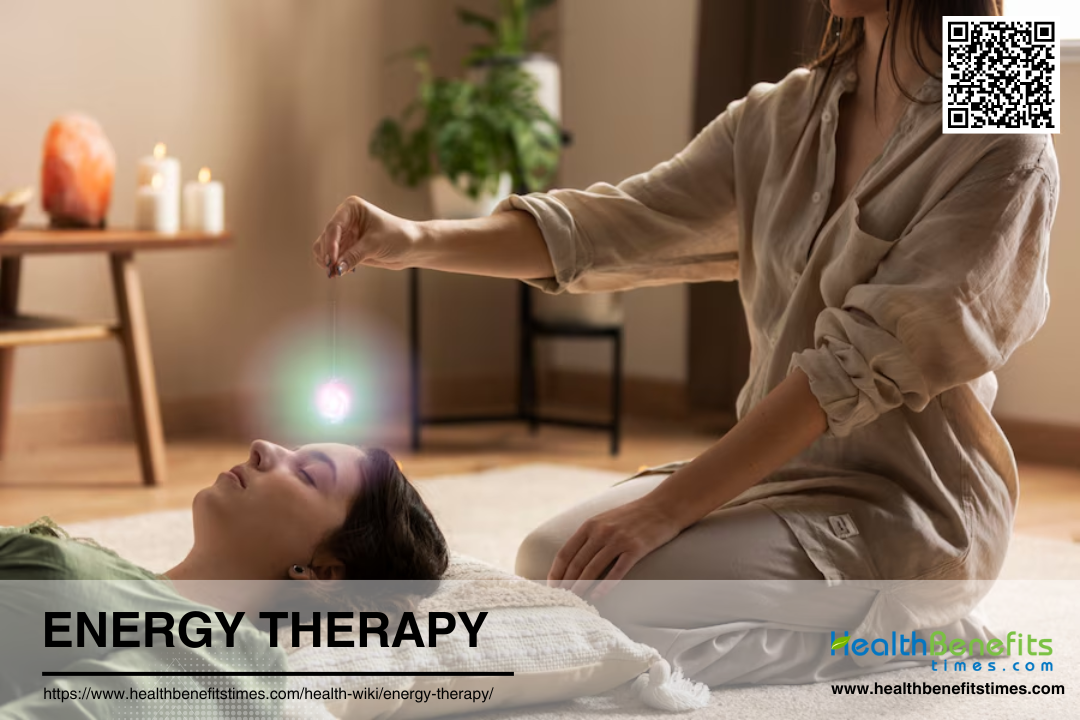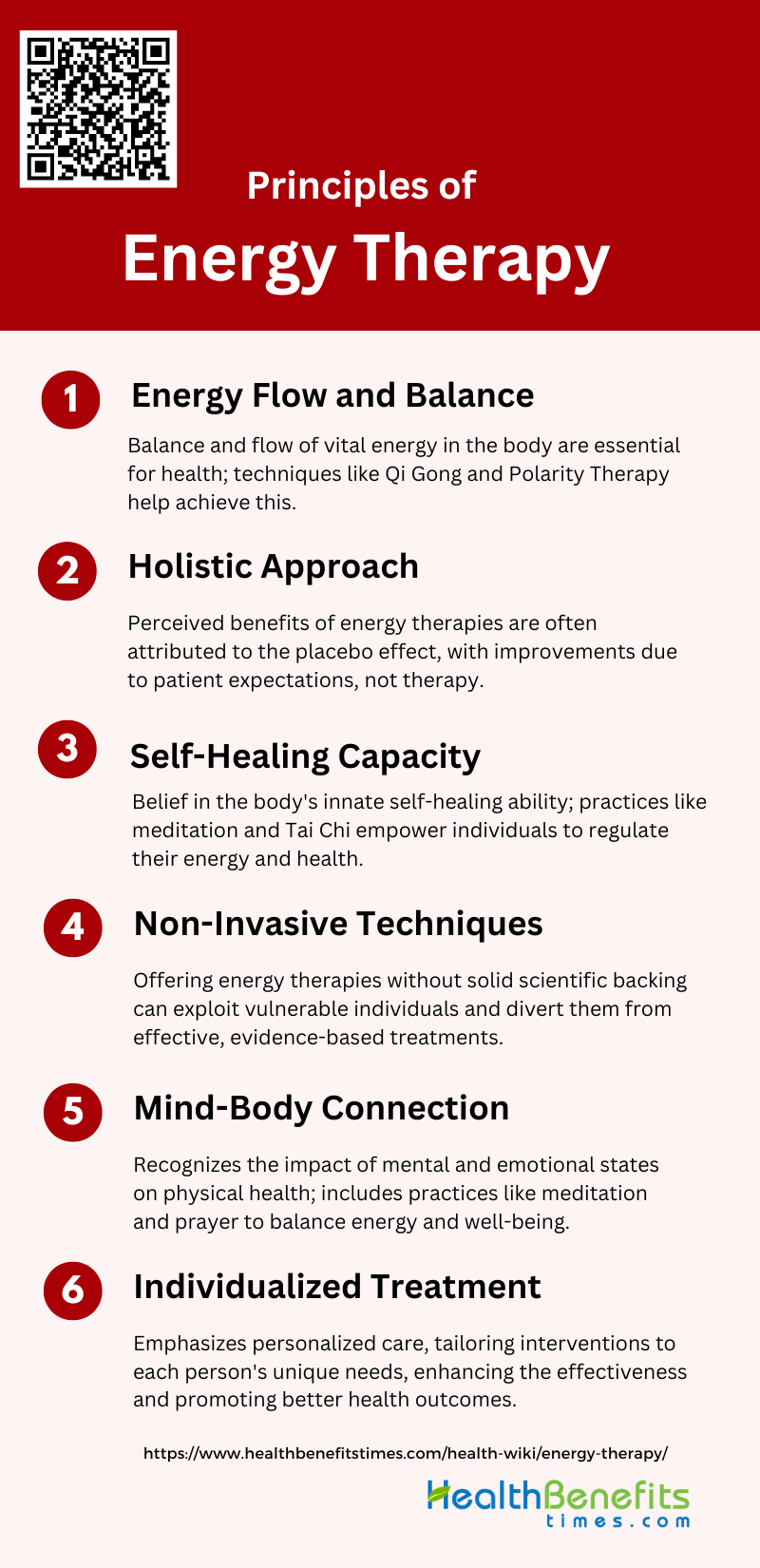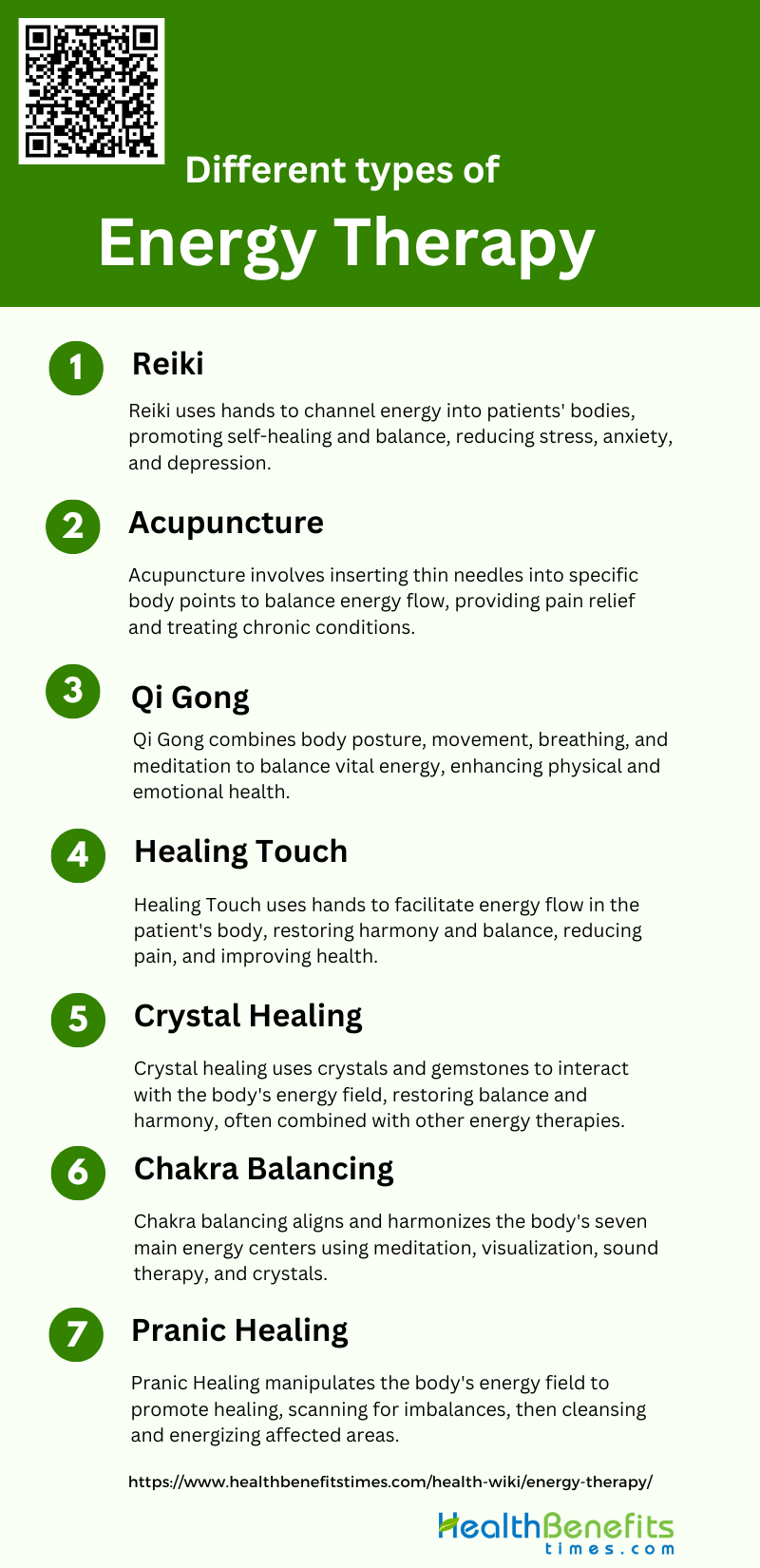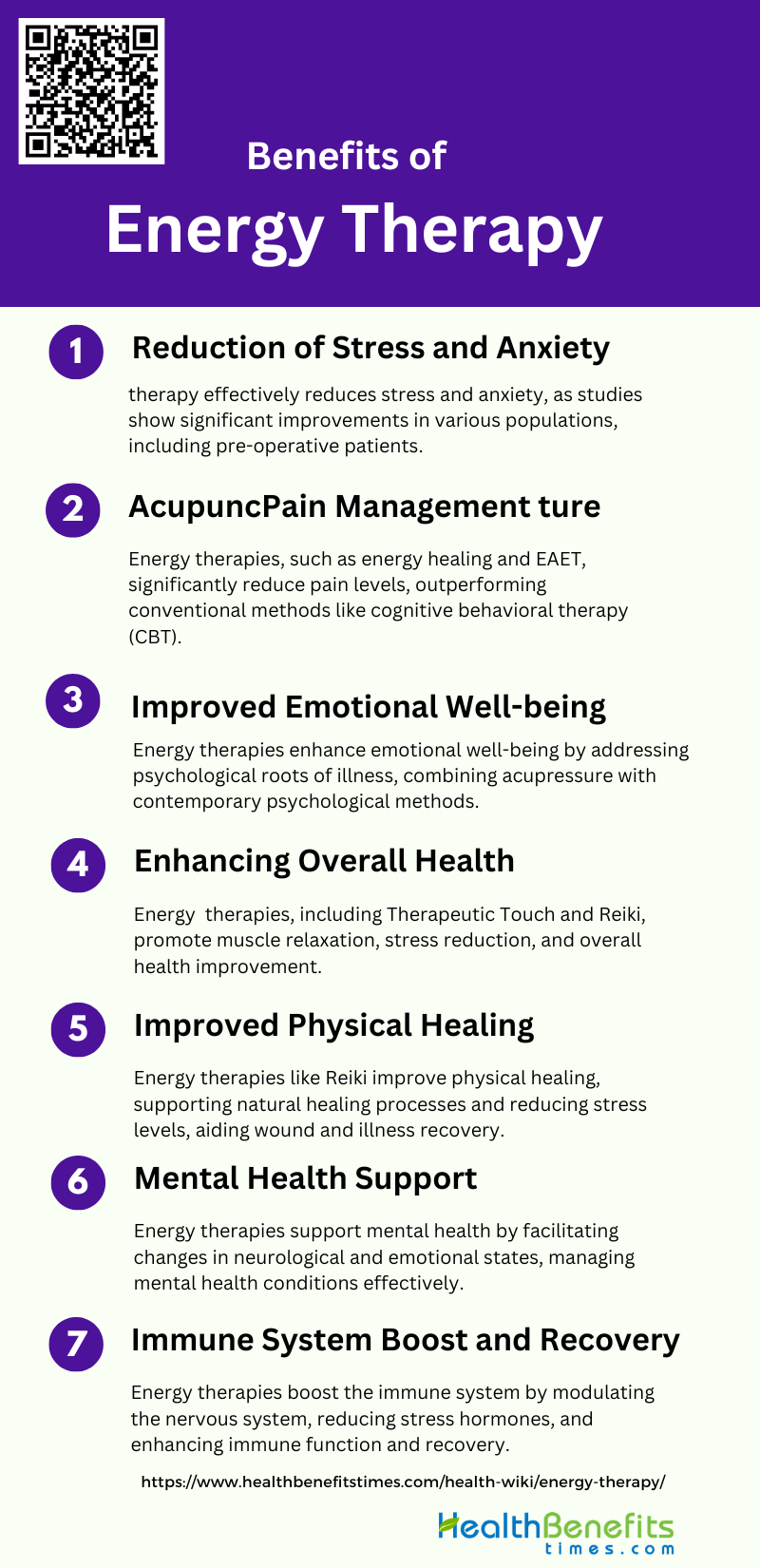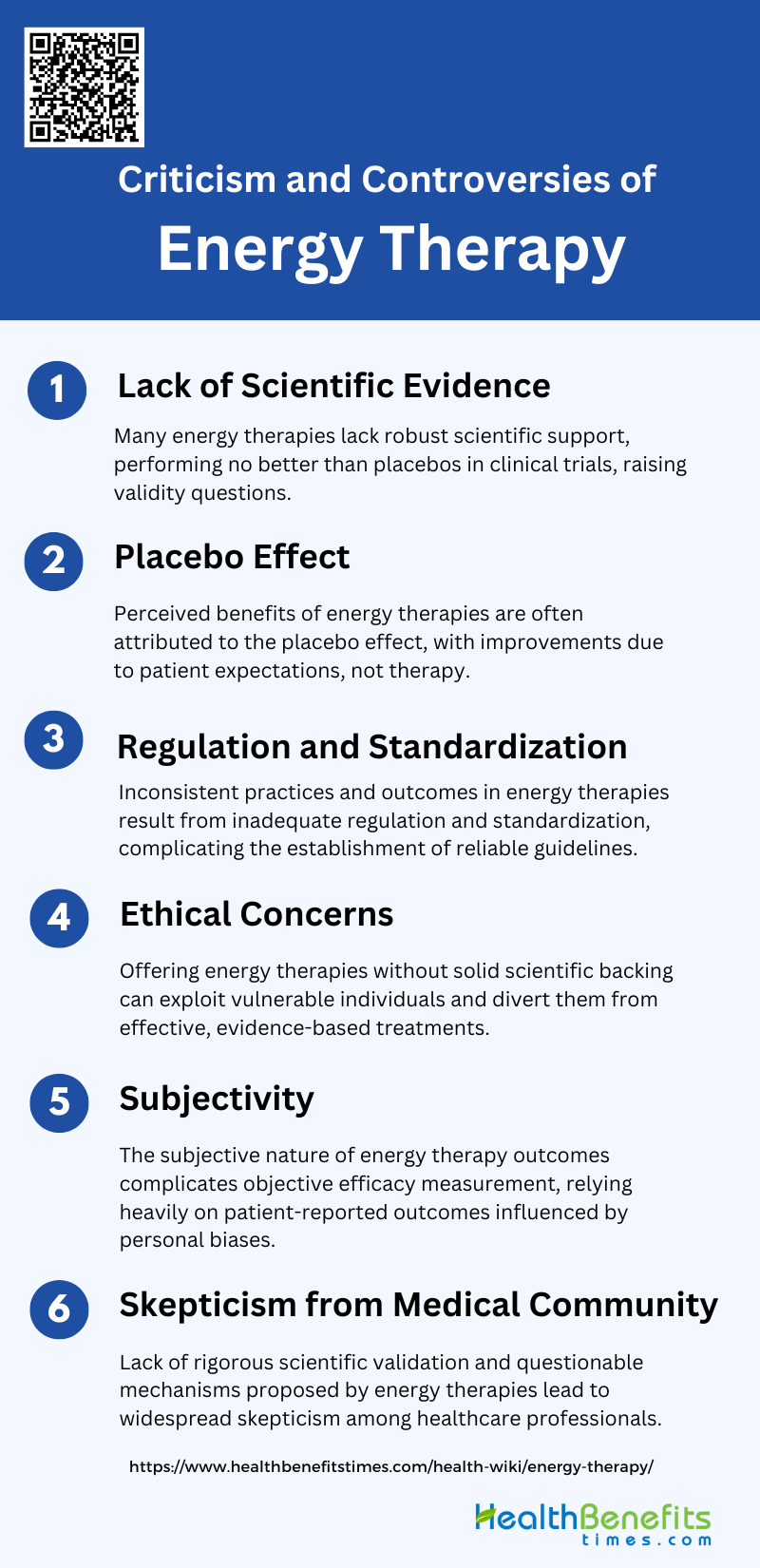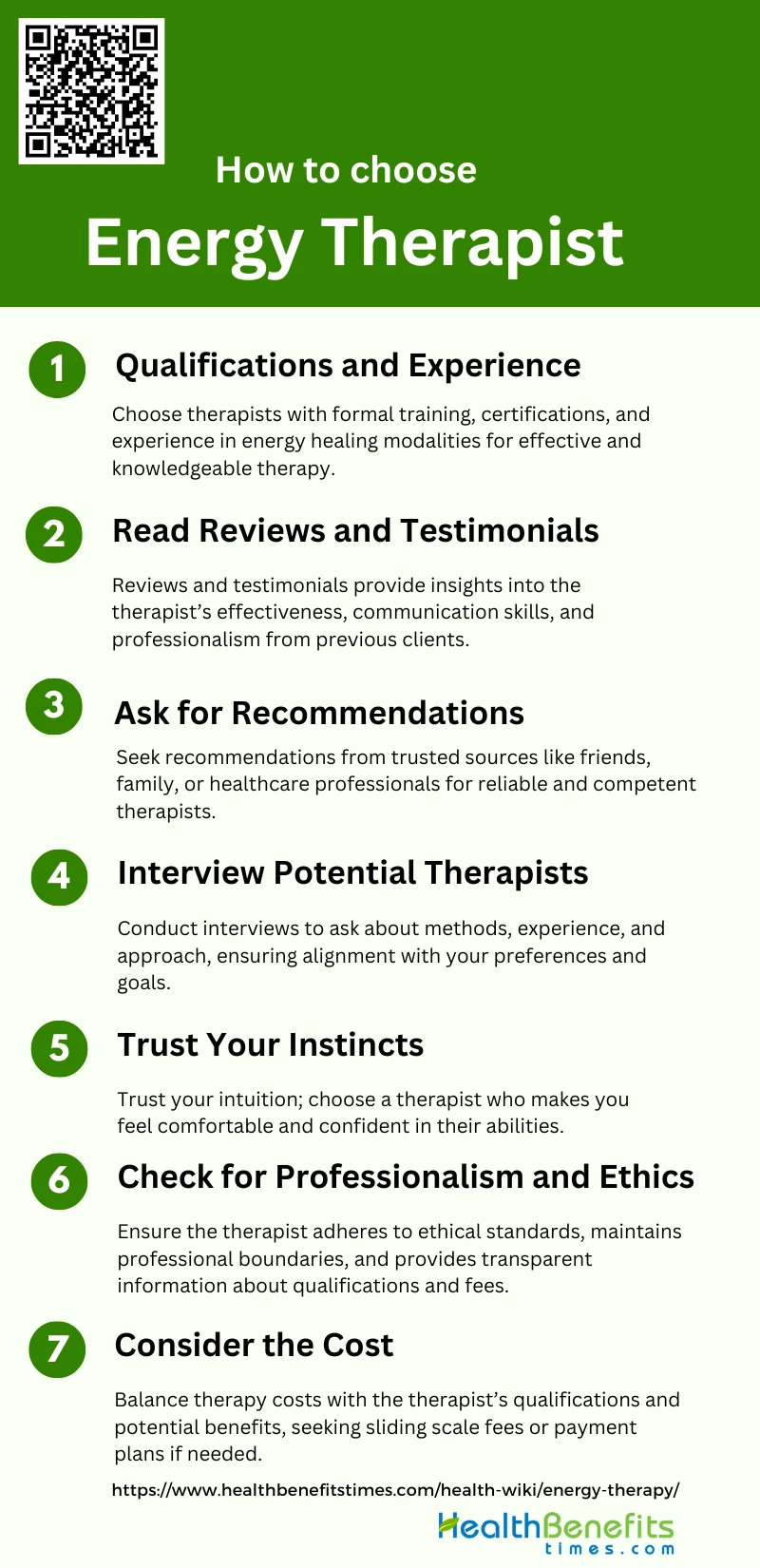Energy therapy, also known as energy healing, is a form of complementary and alternative medicine that involves the manipulation of the body’s energy fields to promote physical, emotional, and spiritual well-being. This therapeutic approach is based on the premise that disruptions or imbalances in the body’s energy flow can lead to illness and that restoring balance can facilitate healing. Techniques used in energy therapy include practices such as Reiki, acupuncture, and sound healing, which utilize various methods to influence the energy fields. For instance, sound healing employs principles of resonance and entrainment to harmonize the body’s energy, potentially aiding in psychotherapy by addressing emotional and psychological issues through the therapeutic properties of sound.
How Does Energy Therapy Work?
It works by utilizing various techniques to manipulate the body’s energy fields to promote healing and reduce symptoms of various conditions. For instance, the Spiritist “passe” energy therapy has been shown to significantly reduce anxiety symptoms in participants compared to a control group, suggesting its potential effectiveness in mental health treatment. Muscle energy techniques (MET) are another form of energy therapy that effectively reduce chronic and acute pain and increase the range of motion in joints. In the context of neurodegenerative disorders, energy therapies aim to rescue brain energetics by improving glucose metabolism and mitochondrial function, which are crucial for brain health. Healing Energy Therapy (HET) involves the therapist placing hands over specific areas of the patient’s body to influence the human electromagnetic field and bioelectric mechanisms, thereby promoting healing.
Principles of Energy Therapies
Energy therapies are alternative healing practices that focus on the body’s energy fields to promote physical, emotional, and spiritual well-being. Here are some key principles of energy therapies:
1. Energy Flow and Balance
Traditional Chinese medicine, for instance, emphasizes the importance of maintaining a balanced energy flow to prevent and treat physical dysfunctions. Techniques such as Qi Gong and Shen Qi focus on achieving this balance through mind control and energy regulation, promoting overall health and well-being. Similarly, Polarity Therapy aims to balance the human energy field through gentle bodywork and increased self-awareness, addressing energy blockages to restore normal body function and alignment.
2. Holistic Approach
This perspective is evident in practices like Healing Touch, which integrates the human energy field theory to influence physical, emotional, mental, and spiritual health. The holistic orientation of energy medicine not only focuses on healing but also aims to achieve greater well-being, peace, and passion for life. By addressing the energetic foundations of biological processes, energy therapies offer a comprehensive approach to health care that complements conventional medical treatments.
3. Self-Healing Capacity
One of the core principles of energy therapies is the belief in the body’s innate capacity for self-healing. Polarity Therapy, for example, empowers clients with tools and resources to create and maintain health, emphasizing the role of the individual in their healing process. Techniques such as meditation, internal Qigong, and Tai Chi are intrinsic energy modalities that promote self-healing by regulating the body’s energy fields. These practices enable individuals to take an active role in their health, fostering a stronger patient-practitioner partnership in the healing process.
4. Non-Invasive Techniques
Methods like Healing Touch involve placing hands over specific areas of the body without necessarily making physical contact, aiming to influence the human energy system. Similarly, Polarity Therapy uses gentle bipolar contact bodywork to rebalance energy flow without invasive procedures. These non-invasive techniques can be readily and economically applied, offering a safe alternative or complement to conventional medical treatments.
5. Mind-Body Connection
The mind-body connection is a fundamental aspect of energy therapies, recognizing the influence of mental and emotional states on physical health. Practices such as meditation, prayer, and mental healing are integral components of mind-body medicine, which is a category of energy therapies. These practices help regulate emotions and maintain a still mind, contributing to overall energy balance and health. The integration of mind-body techniques in energy therapies underscores the importance of addressing psychological well-being as part of the healing process.
6. Individualized Treatment
This personalized approach is evident in practices like Polarity Therapy, where practitioners assess and address specific energy blockages and imbalances in clients. The holistic, theory-based approach of Healing Touch also places a patient’s perceived needs first, caring for both the body and spirit. By focusing on the individual, energy therapies offer customized care that enhances the effectiveness of the healing process and promotes better health outcomes.
Different Types of Energy Therapy
Energy therapy encompasses a variety of practices aimed at balancing the body’s energy fields to promote physical, emotional, and spiritual well-being. Here are some common types of energy therapy:
1. Reiki
Reiki is a form of biofield energy therapy that involves the use of hands to channel energy into the patient’s body, promoting self-healing and balance. Originating in Japan, Reiki is increasingly used as a complementary treatment in both clinical and non-clinical settings. Research indicates that Reiki may be effective in reducing stress, anxiety, and depression, although more rigorous studies are needed to confirm these findings. The therapy is generally considered safe and inexpensive, making it a popular choice for those seeking alternative treatments for mental health and pain management.
2. Acupuncture
Acupuncture is a traditional Chinese medicine technique that involves inserting thin needles into specific points on the body to balance the flow of energy, or Qi. This practice is based on the concept of meridians, which are pathways through which energy flows. Acupuncture is widely used for pain relief, stress reduction, and treatment of various chronic conditions. Studies have shown that acupuncture can be effective in managing long-term disabilities and promoting overall well-being by restoring energy balance. The growing interest in acupuncture within the medical community highlights its potential as a complementary therapy.
3. Qi Gong
Qi Gong, also known as Chi Kung, is a holistic system of coordinated body posture, movement, breathing, and meditation used for health, spirituality, and martial arts training. It is based on the concept of balancing vital energy within the body. Qi Gong practices aim to cultivate and balance Qi, enhancing physical and emotional health. Techniques like Shen Qi, a sophisticated form of Qi Gong, rely on mind control to prevent illness and promote healing. Qi Gong is particularly beneficial for individuals with long-term physical disabilities, helping them achieve a state of energy balance and improved quality of life.
4. Healing Touch
Healing Touch (HT) is an energy therapy that involves the use of hands to facilitate the flow of energy in the patient’s body, promoting healing and well-being. It is commonly used in hospital and community-care settings as a complementary therapy. HT aims to restore harmony and balance in the energy system, which can help alleviate physical, emotional, and spiritual issues. Research suggests that HT can be effective in reducing pain and improving overall health, although more studies are needed to fully understand its mechanisms and benefits. The increasing acceptance of HT in the medical community underscores its potential as a valuable complementary therapy.
5. Crystal Healing
Crystal healing involves the use of crystals and gemstones to promote physical, emotional, and spiritual healing. Practitioners believe that crystals can interact with the body’s energy field, or biofield, to restore balance and harmony. Each type of crystal is thought to have specific healing properties, and they are often placed on or around the body during a session. While scientific evidence supporting the efficacy of crystal healing is limited, it remains a popular alternative therapy. The practice is often used in conjunction with other energy therapies, such as Reiki and Healing Touch, to enhance their effects.
6. Chakra Balancing
Chakra balancing is an energy therapy that focuses on aligning and harmonizing the body’s seven main energy centers, or chakras. Each chakra is associated with specific physical, emotional, and spiritual functions. Imbalances or blockages in the chakras are believed to lead to various health issues. Techniques used in chakra balancing include meditation, visualization, sound therapy, and the use of crystals. The goal is to restore the free flow of energy through the chakras, promoting overall well-being. While empirical research on chakra balancing is limited, it is widely practiced in holistic and complementary medicine.
7. Pranic Healing
Pranic Healing is an energy therapy that involves the manipulation of the body’s energy field, or prana, to promote healing and well-being. Practitioners use their hands to scan the body for energy imbalances and then cleanse and energize the affected areas. Pranic Healing is based on the principle that the body has the innate ability to heal itself, and by enhancing the flow of prana, this process can be accelerated. Research on Pranic Healing is still in its early stages, but preliminary studies suggest it may be effective in reducing stress, pain, and other health issues. The practice is gaining popularity as a complementary therapy in various healthcare settings.
Benefits of Energy Therapy
It offers a range of benefits that can enhance both physical and mental well-being. By addressing the body’s energy fields, this holistic approach can help reduce stress, alleviate pain, and promote overall healing. Here are some key benefits of energy therapy:
1. Reduction of Stress and Anxiety
Energy therapy has been shown to significantly reduce stress and anxiety levels in various populations. For instance, a study on the Spiritist “passe” energy therapy demonstrated a marked reduction in anxiety symptoms among participants, with a more pronounced effect compared to the control group. Similarly, energy healing (EH) was found to decrease pre-operative anxiety in patients undergoing surgery for adolescent idiopathic scoliosis. These findings suggest that energy therapies can be effective complementary treatments for managing stress and anxiety.
2. Pain Management
A randomized controlled trial found that energy healing sessions significantly reduced pain levels in patients undergoing surgery for adolescent idiopathic scoliosis. Additionally, emotional awareness and expression therapy (EAET), which incorporates energy psychology principles, was shown to achieve greater pain reduction than cognitive behavioral therapy (CBT) in older adults with chronic musculoskeletal pain. These studies highlight the potential of energy therapies in alleviating pain.
3. Improved Emotional Well-being
Energy therapies contribute to improved emotional well-being by addressing the psychological roots of illness. Techniques such as energy psychology combine acupressure with contemporary psychological methods to facilitate beneficial changes in mental states that impede immune function and emotional influences that contribute to illness. This holistic approach helps in promoting emotional well-being and overall mental health.
4. Enhancing Overall Health
Research on various energy-based modalities, including Therapeutic Touch, Healing Touch, and Reiki, suggests that these therapies can improve muscle relaxation, aid in stress reduction, and promote a sense of well-being. The multidimensional aspects of healing inherent in patient care are expanded through the application of energy therapies, contributing to overall health enhancement.
5. Improved Physical Healing
For example, studies have reported significant outcomes in wound healing and advanced AIDS patients receiving energy healing treatments. Additionally, energy therapies like Reiki have been associated with reduced stress levels, which can indirectly support the body’s natural healing processes. These findings indicate that energy therapies can be beneficial in promoting physical healing.
6. Mental Health Support
Energy psychology, for instance, is utilized to facilitate changes in the neurological underpinnings of mental states that impede immune function and emotional influences that contribute to illness. This approach helps in managing mental health conditions and promoting psychological well-being.
7. Immune System Boost and Recovery
Preliminary evidence suggests that energy psychology can send deactivating signals to areas of the limbic system in hyperarousal and activating signals to regions of the prefrontal cortex that support executive functions. This modulation of the nervous system can enhance immune function and support recovery from illness. Additionally, energy therapies like the Spiritist “passe” have been shown to prevent the elevation of stress hormones, which can positively impact immune function.
Criticisms and Controversies of Energy Therapy
Energy therapy, often referred to as energy healing, has faced several criticisms and controversies over the years. Here are some key points:
1. Lack of Scientific Evidence
Many studies funded by reputable institutions, such as the US National Center for Complementary and Alternative Medicine (NCCAM), have shown that energy therapies often do not perform better than placebos in clinical trials. For instance, a review of NCCAM-funded studies found that those with a low risk of bias showed no effect beyond placebo. This lack of empirical support raises questions about the validity and efficacy of energy therapies.
2. Placebo Effect
The placebo effect is a significant concern in the evaluation of energy therapies. Studies have shown that the perceived benefits of these therapies may be attributed to the placebo effect rather than any specific therapeutic action. For example, a meta-analysis of extracorporeal shockwave therapy (ESWT) for plantar fasciitis found that the success rates and pain relief were not significantly different from placebo in many cases. This suggests that the improvements reported by patients could be due to their expectations rather than the therapy itself.
3. Regulation and Standardization
The regulation and standardization of energy therapies are often inadequate, leading to inconsistent practices and outcomes. The lack of standardized protocols makes it difficult to compare results across different studies and settings. For instance, the effectiveness of pulsed electromagnetic field (PEMF) therapy for osteoarthritis varied widely across studies, with no clear consensus on optimal treatment parameters. This inconsistency complicates the establishment of reliable guidelines and undermines the credibility of energy therapies.
4. Ethical Concerns
Ethical concerns arise when patients are offered energy therapies that lack solid scientific backing. This can lead to the exploitation of vulnerable individuals seeking relief from chronic conditions. Critics argue that promoting such therapies without sufficient evidence is unethical, as it may divert patients from more effective, evidence-based treatments. The debate over the ethical implications of using electroconvulsive therapy (ECT) without robust modern-era placebo-controlled trials highlights the ethical dilemmas in offering treatments with questionable efficacy.
5. Subjectivity
The subjective nature of many energy therapies makes it challenging to measure their efficacy objectively. Patient-reported outcomes, such as pain relief and improved well-being, are often used as primary endpoints, which can be influenced by individual perceptions and biases. For example, studies on energy psychology, which involves tapping on acupuncture points, rely heavily on subjective assessments of mental and emotional states. This subjectivity complicates the interpretation of results and the establishment of objective efficacy.
6. Skepticism from Medical Community
The medical community remains largely skeptical of energy therapies due to the lack of rigorous scientific validation. Many healthcare professionals question the mechanisms proposed by these therapies and their purported benefits. The skepticism is further fueled by studies showing no significant benefits of energy drinks on mental energy and cognitive functions compared to placebo. This skepticism is a barrier to the wider acceptance and integration of energy therapies into mainstream medical practice.
How to Choose an Energy Therapist
Selecting the right energy therapist can significantly impact your healing journey. It’s essential to consider various factors to ensure you find a practitioner who aligns with your needs and goals. Here are some key points to help you make an informed decision:
1. Qualifications and Experience
When selecting an energy therapist, it is crucial to consider their qualifications and experience. Look for therapists who have formal training and certifications in energy healing modalities. Verify their educational background and any additional training they may have undergone. Experienced therapists are more likely to have a deeper understanding of various techniques and their applications, which can significantly impact the effectiveness of the therapy. According to a systematic review, the efficacy of muscle energy techniques (MET) in reducing pain and increasing range of motion is well-documented, highlighting the importance of a therapist’s expertise in specific methods.
2. Read Reviews and Testimonials
Reading reviews and testimonials from previous clients can provide valuable insights into the therapist’s effectiveness and approach. Positive feedback and high ratings often indicate a therapist’s ability to build a good rapport with clients and deliver satisfactory results. Testimonials can also shed light on the therapist’s communication skills and professionalism. As noted in the literature, the therapist-client relationship is crucial for successful therapy outcomes, emphasizing the importance of client perceptions and experiences.
3. Ask for Recommendations
Seeking recommendations from trusted sources such as friends, family, or healthcare professionals can help you find a reliable energy therapist. Personal referrals often come with firsthand accounts of the therapist’s skills and demeanor, making it easier to gauge their suitability for your needs. Recommendations can also provide a sense of security and trust, which is essential for a therapeutic relationship. Studies suggest that word-of-mouth referrals are a common starting point for finding a competent therapist.
4. Interview Potential Therapists
Before committing to a therapist, consider conducting interviews with potential candidates. This allows you to ask specific questions about their methods, experience, and approach to therapy. It also provides an opportunity to assess their communication style and whether you feel comfortable with them. An interview can help you determine if the therapist’s techniques align with your personal preferences and therapeutic goals. Research indicates that open communication and a reliable therapist-client relationship are key factors in successful therapy.
5. Trust Your Instincts
Your intuition plays a significant role in choosing the right energy therapist. Pay attention to how you feel during your initial interactions with the therapist. If you feel at ease and confident in their abilities, it is likely a good match. Trusting your instincts can help you select a therapist who resonates with you on a deeper level, which can enhance the therapeutic experience. The importance of a therapist’s personality and the client’s comfort level is highlighted in various studies, underscoring the need for a good personal fit.
6. Check for Professionalism and Ethics
Professionalism and ethical conduct are non-negotiable when choosing an energy therapist. Ensure that the therapist adheres to a code of ethics and maintains professional boundaries. They should be transparent about their qualifications, fees, and the scope of their practice. Ethical therapists prioritize the well-being of their clients and provide a safe and respectful environment for healing. The literature emphasizes the significance of professional qualifications and ethical practices in therapy, which contribute to better client outcomes.
7. Consider the Cost
The cost of therapy is an important factor to consider. While it is essential to find a therapist who fits your budget, it is equally important to ensure that the quality of therapy is not compromised. Some therapists may offer sliding scale fees or payment plans to accommodate different financial situations. Evaluating the cost in relation to the therapist’s qualifications and the potential benefits of the therapy can help you make an informed decision. Studies on decision-making in therapy highlight the need to balance cost considerations with the quality and effectiveness of the therapeutic intervention.


